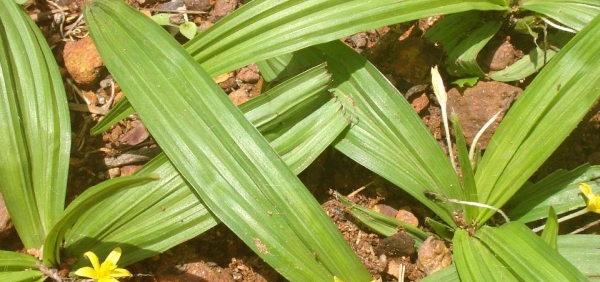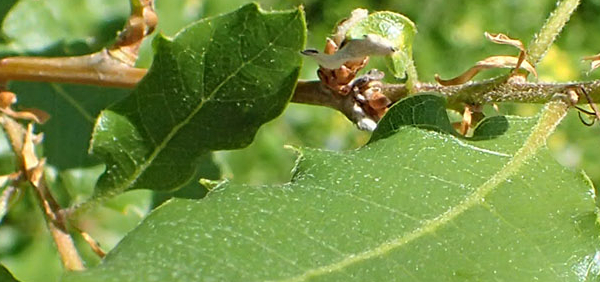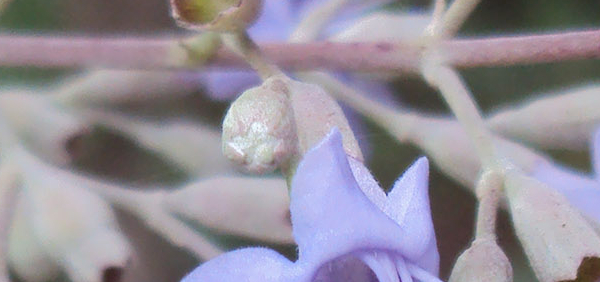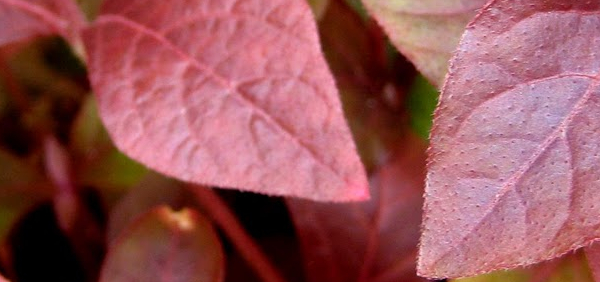tejasvini :
 Tumburu is a medicinal plant native to North America. It is a small thorny tree or shrub, up to 6 m high, with dense foliage, and mainly found in the valleys of the Himalayas at an altitude of 1000 to 2100 m, in Khasi hills at 600 to 1800 m, and in the Ghats in peninsular India. Its branches have nearly straight prickles up to 1.2 cm long.
Tumburu is a medicinal plant native to North America. It is a small thorny tree or shrub, up to 6 m high, with dense foliage, and mainly found in the valleys of the Himalayas at an altitude of 1000 to 2100 m, in Khasi hills at 600 to 1800 m, and in the Ghats in peninsular India. Its branches have nearly straight prickles up to 1.2 cm long.HISTORICAL AND MYTHOLOGICAL REVIEW:
Since ancient times, the plant Zanthoxylum armatum is traditionally used and have been of much interest due to its historical claims as well as anticancer properties. Several other species of this genus have previously shown to have cytotoxicity against various human cancer and tumor cell lines. Hence the cytotoxic activity of the extracts of Zanthoxylum armatum corresponds well with the cytotoxic potential of this genus.Taxonomical Classification
Kingdom: Plantae - Plants
Subkingdom: Tracheobionta - Vascular plants
Superdivision: Spermatophyta - Seed plants
Division: Magnoliophyta - Flowering plants
Class: Magnoliopsida - Dicotyledons
Family: Rutaceae
Genus: Zanthoxylum
Species: Zanthoxylum alatum
Allied species:
VERNACULAR NAMES
Sanskrit: Tejovati, Tumbru,Tejovali, Tejohva, TejbateeEnglish: prickly ash, toothache tree , Winged Prickly Ash, TumbruTejbal, Yellow wood, Suterberry
Hindi: Tejbal, Tumbura, Napali Dhaniya
Urdu: Kabab-e-Khanda (Miswak)
Telugu: Tejasvini
Bengali: Nepali Dhane, Gaira
Marathi: Tejbal, Tejobalee
Konkani: -
Oriya: Tejbal
Gujarathi: Tejbal
Tamil: Tejaphalam, Tejasvini
Malayalam: Tejaphalam, Tejasvini,Thumboonal, Thumbooni
Kannada: Tejaphal, Tumburu
Punjabi: Tirmira, Tundopoda
Sindhi: ڏند ڪٿان وڻ
Arabic: Phagir karava khandan,Fagrieh
Spanish: árbol del dolor de muelas
Assamese: Tejovati
Japanese: -Fuyu zanshou
Chinese: -Ci zhu ye hua jiao, Qin jiao, Huan hua zhen, Bai zong guan, Shan hua jiao. Zhu ye jiao.
French: arbre mal aux dents
German: -Nepalpfeffer.
Burma: -Gawra kha nan nan, Teza bo, Hua jiao.
Nepal: टिमुर Timur
Persian: Kavava dahana kushada
Sinhalese: ඒක නෙවෙයි මේ ගස ēka neveyi mē gasa
Greek: -δέντρο πονόδοντου déntro ponódontou
Varities:
-- Zanthouyllum limonella (Denenit ) Aiston
- Zanthouyllum alatum. Roxb
- Zanthouyllum acanthopodium DC.
- Zanthouyllum alatum DC.
- Zanthouyllum aromatum DC.
Synonyms
Synonyms in Ayurveda: tumburu, tejovati, tumbaru, tumbul=
- Tumburu
- Saurabha – Having pleasant smell
- Sauro – Having pleasant smell
- Vanaja – As it is grown in the forest.
- Tejasvini – As it is having tikshna Guna
- Saureya – Having pleasant smell.
- Tejohva – Tikshna dravya or Agni vardaka
- Tejabala – Agnivardaka
- Tejani -Tikshna dravya
- Tejodva – As it is having tikshna guna
- Soolagna – Soolagna action
- Sugandi – Having pleasant smell.
Rasa: Katu Tikta
Guna: Laghu Ruksha Teeskhsna
Veerya: Ushna
Vipaka: Katu
Karma: Vathakaphahara
The Latin name of Tumbru or Toothache tree is Zanthoxylum alatum. As the common name of the tree suggests it is used traditionally to get relief from tooth ache. It has numbing effect on teeth, and gums. In Ayurveda, it is used for the skin diseases, loss of smell, heaviness, and pain in head, chronic coryza, and arthritis.
Cultivation:
Land preparation and fertilizer application
- Land may be ploughed two to three times using disc harrow and cultivator to make it friable and weed-free.
- About 10– 12 tonnes per hectare of FYM (farmyard manure) should be mixed with the soil as a basal dose before transplantation.
Transplanting and optimum spacing
- After 10–12 months of growth in the nursery, transplanting in the field can be done during May–June if irrigation facilities are available.
- Otherwise, it is done in July–August (monsoon season) under rain-fed conditions.
- A spacing of 50 cm × 50 cm is recommended, which accommodates about 40 000 plants per hectare.
Interculture and maintenance practices
- Weeding should be carried out during the initial establishment phase, 30–45 days after transplanting, and again at 60–80 days after transplanting.
- Later, weeding may be carried out only as and when required.
Intercropping system
- The plant can be grown as a mono crop as well as a mixed crop with herbaceous species.
Irrigation practices
- The plant requires frequent irrigation during the establishment stage.
- Once established, the plants are able to survive in rain-fed conditions and only life-support irrigation is required during the summer months.
Propogation:
- Freshly harvested seeds are best for the large-scale cultivation of Zanthoxylum species. Mature seeds can be collected in June–July.
- In the absence of sufficient seeds, terminal stem cuttings may be used as propagules.
Harvesting:
Crop maturity and harvesting
- Flowering appears on five-year-old plants in March–May.
- Fruiting occurs in July–August.
- The crop, thus, takes five to seven years to mature.
- Fruits are collected in May–June.
- Stem pieces, if needed, may be cut during January–February before the flowers appear.
Phytochemistry:
It contains various important, active and useful biochemicals. Its stem bark contain essential oils that have monoterpenes like linalool and limonene and armatamide, an amide. The alcoholic extract of the stem bark have a new flavonoidal glycoside.
The seeds of plant contain active components like enolic acid and volatile compounds like alkanoids, flavonoids, glycosides, sterols, fatty acids, lignins, amino acids, aromatic compounds.
Its leaves contains linalool, various kinds of terpenes, ketone compounds and linolyl acetate.
PHARMACOLOGY:
- Hingvadi Taila
- Madusnhi rasayan
- Dantmanjan
Parts used for medicinal purpose
Bark, Flower, Fruit, Leaves, Seed, ,Dosage:
Antidote:
-The flowers are used as antidote for snake biteCommercial value:
Morphology:
- Timru is an evergreen, thorny shrub or small tree, attaining a height up to 6 m.
- Leaves are 4–20 cm long, imparipinnate, pungent, and aromatic with glabrous, narrowly winged petiole having two stipular prickles at the base.
- Leaflets are lanceolate, glabrous on the underside, and occur in two to six pairs.
- The plant can be recognized by its shrubby habit, dense foliage, with pungent aromatic taste, prickled trunk and branches, and small red, subglobose fruits.
- Flowers occur in dense terminal or sparse axillary panicles and are green to yellow in colour.
- Calyx consists of six to eight sub-acute lobes.
- Stamens are about six to eight in number. Ripe carpels or follicles are usually solitary, pale red, and tubercled.
- Seeds are globose, shining, and black.
- Flowering occurs from March to May, while fruiting occurs from July to August.
Histology:
-Fruit - Pericarp shows large oil cavities and vascular tissues surrounded by parenchymatous cells containing irregular masses of hesperidin and followed by 2 to 5 layered palisade-like cells, hesperidin insoluble in organic solvents but soluble in potassium hydroxide. Seed - Testa shows wide, very thick-walled, irregular, non-lignified cells having blackish-brown contents and numerous oil globules; tegmen shows 3 or 4 oval to polygonal tangentially elongated thin-walled parenchymatous cells, followed by 8 to 10 layers tangentially elongated tabular cells filled with reddish-brown contents; endosperm consists of thin-walled, polygonal, parenchymatous cells.Geographical distribution:
- The species is found in hot valleys of subtropical Himalayas, from trans- Indus areas to Bhutan, up to an altitude of 2400 m, and between 700 m and 1000 m in the Khasi Hills.
- It also occurs in the hills of Ganjam and Vishakapatnam at an altitude of about 1500 m.
ECOLOGICAL ASPECT:
Nothing listed.Plant conservation:
General Use:
It is known as stimulant, antiparasitic and prevents necrosis. Its powder is used as dust on wound. It is also used in headache.
The Juice of this plant is used for throat disorders, gargling in oral and dental problems.
Therapeutic Uses:
Prickly Ash is used in many chronic problems such a rheumatism and skin diseases; chilblains, cramp in the leg, varicose veins and varicose ulcers. It is also used for low blood pressure, fever, and inflammation. Externally it may be used as a stimulation liniment for rheumatism and fibrositis. It has a stimulating effect upon the lymphatic system, circulation and mucous membranes.Systemic Use:
- Fruits, seeds, and bark of tejbal are used as aromatic tonic in dyspepsia and fever.
- Fruits and seeds are beneficial in dental troubles, thus used to prepare dental paste and powder.
- Tender twigs are used to brush teeth and used as a remedy for toothache.
- The essential oil from fruits (known as Wartara oil) has deodorant and antiseptic properties.
- The seeds and the bark are stomachic and vermifuge[46
- They are used as an aromatic tonic in the treatment of fevers, dyspepsia and cholera
- The powdered seeds are eaten to rid the body of roundworm
- A decoction of 7 - 14 seeds is used in the treatment of abscesses, arthritis, bruises, gastritis, swellings etc
- A paste of the seeds is held between the teeth for about 10 minutes to relieve toothache
- The fruits, branches and thorns are considered to be carminative and stomachic
- They are used as a remedy for toothache
- A paste of the leaves is applied externally to cuts and wounds
- The resin contained in the bark, and especially in that of the roots, is powerfully stimulant and tonic
- The root is boiled in water for about 20 minutes and the filtered water drunk as an anthelmintic
- An infusion of the leaves is drunk to relieve stomach pains
- A paste of the leaves is applied externally to treat leucoderma
Administration:
The powdered bark is applied topically.Pharmacological:
- Astringent, Antibacterial, and Antiseptic
- Antiplaque: Acting to prevent or remove plaque
- Carminative: Preventing the formation or causing the expulsion of flatulence.
- Diaphoretic: promote sweating.
- Hypoglycemic: Reducing the level of the sugar glucose in the blood.
- Stomachic: stimulates gastric activity.
- Tonic: Restore or improve health or well-being.
- Vermifuge: destroys or expels parasitic worms (anthelmintic)
Clinical trials:
Sarwar Alam / Journal of Asian Natural Products Research, Volume 11, Issue 1 January 2009 , pages 91 - 95 / DOI: 10.1080/10286020802514622Antifungal and Insect-Repellent Activity of Essential Oil of Zanthoxylum alatum / S Dube, A Kumar and S C Tripathi / Annals of Botany 65: 457-459, 1990Hepatoprotective activity of leaves of Z armatum DC in CCl4-induced hepatotoxicity in rats / Nitin Verma and R L Khosa / Indian Journ of Biochem & Biophysics, Vol 47, April 2010, pp 124-127Insecticidal activity of essential oil from Zanthoxylum armatum fructification against two mosquito species / Zhang Yun, Peng Ying-Hui, Zeng Dong-Qin et al / DOI: CNKI:SUN:GXZW.0.2010-02-026 / College of Life Science and Technology,Central South University of Forestry and Technology,Changsha 410004,ChinaChemical composition and larvicidal activities of the essential oil of Zanthoxylum armatum DC (Rutaceae) against three mosquito vectors / Mohini Tiwary, S N Naik, Dhananjay Kumar et al / J Vect Borne Dis 44, September 2007, pp. 198–204
Research:
Pharmacological basis for the medicinal use of Zanthoxylum armatum in gut, airways and cardiovascular disorders / Syed Naeemuddin Gilani, Arif-ullah Khan, Anwarul Hassan Gilani et al / Phytotherapy Research, April 2010; Volume 24, Issue 4: pp 553–558 / DOI: 10.1002/ptr.2979Zanthoxylum armatum DC. (accepted name) / Chinese names / Catalogue of Life, ChinaSorting Zanthoxylum names / Maintained by: Michel H. Porcher / MULTILINGUAL MULTISCRIPT PLANT NAME DATABASE / A Work in Progress. School of Agriculture and Food Systems. Faculty of Land & Food Resources. The University of Melbourne. Australia / Copyright © 1997 - 2000 The University of Melbourne.Studies on the Components of Essential Oil of Zanthoxylum Armatum by Gc-Ms / Amran Waheed, Shahid Mahmud, Mubeen Akhtar, Tanzeela Nazir / AJAC, Vol.2 No.2, May 2011, PP. 258-261 / http://dx.doi.org/10.4236/ajac.2011.22031Volatile Constituents from the Leaves of Zanthoxylum armatum DC., a New Source of 2-Undecanone /Prashant Singh , Manindra Mohan and Sanjay Gupta / Plant Sciences Research, 2013, No 5, No1, pp 1-3 / DOI: 10.3923/psres.2013.1.3ANTI-INFLAMMATORY ACTIVITY OF METHANOLIC EXTRACT OF FRUIT OF ZANTHOXYLUM ARMATUM / Mehta D.K, Bhandari A, Satti N.K, Singh S, Das R, Suri K.A, Sharma S.N / Inventi Rapid: Planta Activa, 2011/10/1ANTIPYRETIC AND CENTRAL NERVOUS SYSTEM ACTIVITY OF THE ROOTS OF ZANTHOXYLUM ARMATUM DC / Khim Singh Bora, Alok pratap singh, Suresh Singh Fartyal, Ankit Vajpayee / Journal of Pharmaceutical Research and Opinion, Vol 1, No 7 (2011)
Precautions:
Toxicity studies:
Use in other system of medicine:
In Unani the fruits, seeds, and bark are used as a carminative, stomachic, and anthelmintic.CONCLUSION:
Zanthoxylum armatum, also called winged prickly ash,is a species of plant in the Rutaceae family. It is an aromatic, deciduous, spiny shrub growing to 3.5 meters in height, endemic to Nepal, China, Japan, Korea and Pakistan.Ayurvedic Formulations:
Common Ayurvedic Formulations of tejasvini with their IndicationsBahushala Guda
KEY WORDS: Tumbru (Zanthoxylum Armatum)
- » Classification and names of tejasvini
- » Synonyms and definitions of tejasvini
- » Drug Properties of tejasvini
- » Chemical Constituents of tejasvini
- » Standardization of tejasvini
- » Parts used and Dosage of tejasvini
- » Morphology and Histology of tejasvini
- » Distribution and Conservation of tejasvini
- » Cultivation of tejasvini
- » tejasvini in the market
- » Medicinal Uses of tejasvini
- » Researches and clinical trails of tejasvini
- » tejasvini in other sytems of medicine
- » Ayurvedic formulations with tejasvini
- » Images of tejasvini













